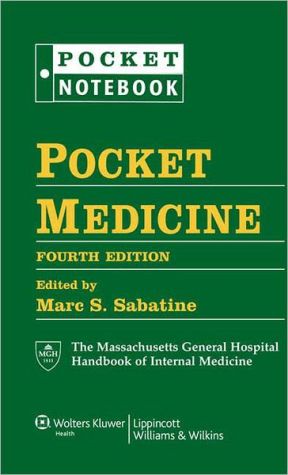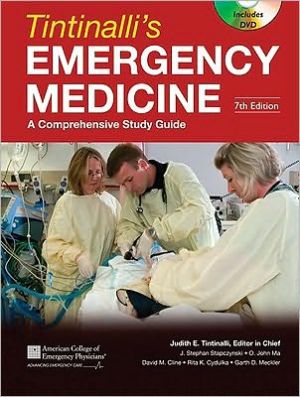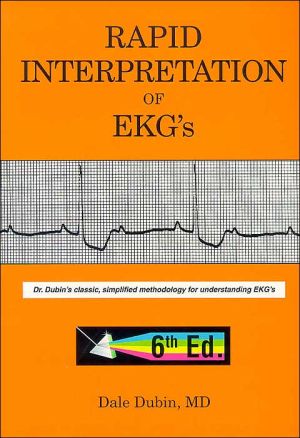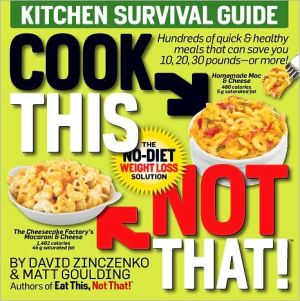Pocket Medicine: The Massachusetts General Hospital Handbook of Internal Medicine
Prepared by residents and attending physicians at Massachusetts General Hospital, this pocket-sized looseleaf is one of the best-selling references for medical students, interns, and residents on the wards and candidates reviewing for internal medicine board exams. In bulleted lists, tables, and algorithms, Pocket Medicine provides key clinical information about common problems in internal medicine, cardiology, pulmonary medicine, gastroenterology, nephrology, hematology-oncology, infectious...
Search in google:
Prepared by residents and attending physicians at Massachusetts General Hospital, this pocket-sized looseleaf is one of the best-selling references for medical students, interns, and residents on the wards and candidates reviewing for internal medicine board exams. In bulleted lists, tables, and algorithms, Pocket Medicine provides key clinical information about common problems in cardiology, pulmonology, gastroenterology, nephrology, hematology-oncology, infectious diseases, endocrinology, rheumatology, and neurology. The six-ring binder resembles the familiar "pocket brain" notebook that most students and interns carry and allows users to add notes. This Third Edition is fully updated, has tabs to help readers locate organ systems, and has more cross-referencing in the index. It also has pockets in the front and the back of the book to accommodate the reader's own notes. Doody Review Services Reviewer:Vincent F Carr, DO, MSA, FACC, FACP(Uniformed Services University of the Health Sciences)Description:This pocket reference for housestaff and attending physicians who treat hospitalized patients contains relevant facts that should be kept in mind, a quick reference for staging classifications of tumors, and many other very useful pieces of information to save physicians time. This update is in keeping with the goal of staying as current as possible.Purpose:The goal is to provide concise information that clinicians need, and the authors have done an extremely good job. The book has a tremendous amount of current information at a time when that information changes significantly and frequently. The authors have selected the most pertinent information to include.Audience:This is clearly a book for those who have the opportunity to see a wide variety of patients in their daily practice. The authors include residents, fellows, and attendings, and the book demonstrates the tremendous teaching abilities of young physicians who are still in their training, to help train others (including their teachers). The editor can take tremendous pride in selecting his authors and bringing the book to fruition.Features:As a concise reference of current medical knowledge, the book has an excellent section on cardiology, including many eponyms, giving multiple classifications such as the older Goldman classification for preoperative evaluation and the current ACC guidelines; an exceptionally easy to understand section on ventilator management; and sections on acid-base and diabetes. There is a very helpful formula and ICUmedication section. The unique 6-ring loose-leaf format can accommodate additional pages as needed in a plastic cover that is tremendously practical.Assessment:This is an extraordinary addition to the many resident books available on the market. This is clearly at the top of the list as practical, useful, easy to use, and complete. Keeping books like these current is a major problem, but this one does well keeping the pace.
Cardiology Rajeev Malhotra, Michelle O'Donoghue, Aaron L. Baggish, Sahil A. Parikh, and Marc S. Sabatine Pulmonary Alexander B. Benson, Ednan K. Bajwa, and Atul Malhotra Gastroenterology Paul S. Sepe, Patrick S. Yachimski, and Lawrence S. Friedman Nephrology Eugene P. Rhee, Ishir Bhan, and Hasan Bazari Hematology-Oncology David B. Skyes, David T. Ting, David Barbie, Yi-Bin A. Chen, Daniel J. DeAngelo, and David P. Ryan Infectious Diseases Rachel P. Simmons, Meghan Baker, and Nesli O. Basgoz Endocrinology Leigh H. Simmons, Michael Mannstadt, and Richard Bringhurst Rheumatology Katherine P. Liao, Robert P. Friday, and Margaret Seton Neurology Tracey A. Cho, Keith A. Vossel, Tim W. Yu, and David M. Greer Appendix
\ From The CriticsReviewer: Vincent F Carr, DO, MSA, FACC, FACP(Uniformed Services University of the Health Sciences)\ Description: This is a very convenient pocket-sized, ring-bound book containing almost all of the basic physiology housestaff need to have at their fingertips. The previous edition was published in 2007.\ Purpose: The stated purpose is to provide a concise description of the initial approach to and management of common inpatient medical problems. Considering the spectrum of the housestaff manuals available, this is significantly more practical than most.\ Audience: This is a valuable asset for every housestaff member, although with a necessarily very small font size, which might make it tough for some eyes.\ Features: While generally organized by organ systems, the chapters look at specific topics such as electrocardiography, pericardial disease, sepsis, renal failure, urinalysis, etc. This edition has new sections such as sleep apnea, viral respiratory infections, and guidance on some medical topics currently under discussion such as intensive glycemic control and infections in susceptible hosts. There are numerous helpful tables, algorithms, and figures.\ Assessment: This is one of the top of the line manuals in a crowd of housestaff-oriented publications. Its size and plastic cover make it extremely utilitarian and easy to carry without destroying. I highly recommend this to medical students and residents just beginning their careers.\ \








